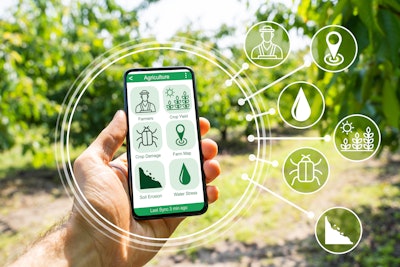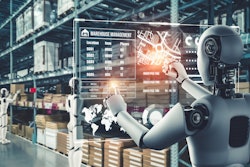
Building resilience in the face of disruption is topping supply chain leaders' priority lists for the first time in a decade. That comes after two years of COVID-19-fueled disruption, which resulted in the waste of millions of dollars and the loss of tons of food. On top of that, a supply chain far from optimization is exacerbating inflation, biting into margins and burdening shoppers.
The pandemic’s disruption has not yet fully passed, and globalization and digitization mean a more disruption-prone supply chain is here to stay. But the technologies and collaborative processes intended to mitigate supply chain disruptions are improving. Proactive logistics companies, retailers and consumer packaged goods (CPG) brands are using data collaboration and artificial intelligence (AI) to predict and respond to supply chain challenges, improve margins, conserve food and better serve customers.
From suppliers to retailers, businesses in the supply chain can build resilience and agility by planning for variability, sharing data and using AI to detect and minimize challenges.
Identify types of supply chain disruption
There are three main types of supply chain disruption, none of which will fade entirely even when COVID-19 has become an endemic virus like the flu.
The first is rising costs for labor and raw materials. These rising prices are exerting pressure on margins, raising the stakes of waste and rattling consumers.
In turn, the rising cost of labor and materials is putting pressure on logistics. Shipping and trucking costs are going up in part because there is just not enough human power and materials available. COVID-19-enforced lockdowns and geopolitical conflicts are exacerbating the problem.
Finally, the longest-term threat to the supply chain is that changes in demand are moving faster and becoming harder to predict. To be sure, COVID-19 provided a perfect example of sudden disruption unparalleled in scale. But faster disruption is here to stay due to globalization and digitization. All it takes is a viral video trend to spur skyrocketing demand for a food, and the entire supply chain for that item can go out of whack for months.
Every business in the food supply chain will need to account for these factors, especially accelerated demand changes, if they are to minimize disruption’s impact.
Plan for variability
The first step toward building resilience is strengthening planning for variability. Businesses need to understand the factors regulating supply and demand for the many products they move, open lines of communication so that they can quickly perceive changes and develop benchmarks so that they can almost automatically take action when conditions deviate from the mean.
Getting executive buy-in on the technologies and partnerships required to plan adequately for supply chain variability rests on making the case to senior leaders that supply chain optimization is no longer just about minimizing costs; it is about strategic advantage.
In the food industry, tech players have transformed supply chain planning into a strategic play when they accustomed consumers to having items delivered the same or next day. Retailers and brands now understand that if items are not in stock, they will lose customers to digital natives, perhaps not just once but forever. As a result, developing the plans required to respond to the next virality-induced rush on inventory is a question of long-term competitive viability.
Of course, planning and execution are easier said than done. That’s why responding to supply chain challenges requires heightened data collaboration.
Share data to gain visibility
Strong planning and partnerships across the supply chain enable data collaboration. The goal of that collaboration is for every player in the supply chain to establish insight into end customer behavior.
CPGs, for example, need to know how much inventory retailers and distributors have on hand at any given moment. Retailers, distributors and suppliers need to know if certain products or even flavors of a product are flying off the shelves so they can adjust production, packaging, shelf space allocation and case count. This agility was previously impossible but is becoming practical in real-time due to advances in supply chain analytics and communication technologies.
Superior data collaboration also allows for root cause analyses to identify and remedy problems faster. For example, if a retailer finds itself out of stock or shopping performance waning, the company needs to be able to work with the brand, distributor, or supplier upstream to understand the primary factor driving the change. Better data sharing is the only way to establish a single source of truth and respond effectively to challenges.
Use AI to enhance pattern detection
The sheer data volume and complexity, as well as the number of calculations required to convert data into actionable insight, are more than Excel spreadsheets and the human brain alone can manage. AI can accelerate the data-driven detection of problems by ingesting and analyzing more information faster. For example, AI can assess shipment and performance, identifying how far levels deviate from normal and alerting human actors not just to adjust practices but how much to adjust to eliminate pain points and waste.
AI can also help businesses experiment quickly and cheaply, creating, for example, digital twins that mimic real-world conditions and enable an understanding of how costs and logistics would shift based on different inputs. This helps businesses stay nimble and chart a better course without wasting time and money.
The combination of planning, data visibility and AI-enhanced intelligence is transforming retail supply chain operations. Consider the example of a niche food startup that, due to its nascency and small set of manufacturers, needs to carefully calibrate requests for materials and packaging based on variable demand. With real-time transparency into product velocity at thousands of stores, the brand should be able to expand lead times for materials and packaging requests from days to months. For young companies or legacy companies struggling with thinning margins, these optimizations can make the difference between being in the red or black.
Improvements in food logistics and collaboration limit astronomical waste and benefit every party in the supply chain. That includes the end customer, who gets what they need efficiently and cost-effectively, a service that is all the more valuable during the current time of supply chain crunches and inflation.



















